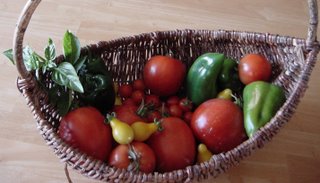Building Bridges with Water
"Water, water everywhere, nor any drop to drink. "
-Samuel Taylor Coleridge
70% of the Earth is covered in water, the majority of our bodies consist of it, and next to air and a decent environmental temperature our bodies need it more than anything else. Yet outside of glacial ice, only .2% of the water on Earth is available for humans in rivers, lakes, and watersheds. The kicker is that we treat that water with immense degrees of arrogance, polluting it with chemicals, evaporating it in resevoirs behind huge damns so we can grow melons in the desert and irrigate lawns in Phoenix. I am beginning to hear the lament that our fathers fought wars for land and ideas, we fight wars for oil, and our children will fight wars for water. Water!
Enough Doom and Gloom. At our Village Board meeting in July I was stunned when the predominantly Republican board not only accepted, but applauded the presentation on the Natural Step-in fact Johnson Creek is now the 4th Eco Municipality in Wisconsin. How was this possible? Our Board is about as far from a bunch of hippies as you can get-but they are pragmatists to the bone. When we showed them the use of waste heat from incinerators heating whole towns and hydraulic lifts running on linseed oil it rang very true to their farmer spirits. Outside of California, the biggest movement for biodiesel is in the heartland with hundreds of farmers demanding diesel lawnmowers and ATV's in addition to their tractors and trucks so that they can grow all their own energy. Personally I don't care if economics was the impetus that pushed them green-it reduces CO2 so I am game. We are building bridges in the Green Movement-with Libertarians railing against Big Business/Government, Christians lamenting the way we are treating the God's Creation, or the budget conscious buying hybrids and solar water heating systems and growing gardens. There are many roads to sustainability and we need people driving (hybrids) on each one.
Water, like green energy and waste reduction can be a bridge builder for the non-environmentalist. I am fond of saying Everyone Breathes, but unless you live in L.A. this is a little too detached for most people to effect behavioral change. If you have to drill an extra 100' in your new well, have your water use mandated, or even your property damaged in a flood that can make a palpable argument for better water management. Even here in South Central WI, where we have sufficient rain, and comparably good agricultural techniques we are in a water crisis. Last summer in the town next to us a farmer sold off a chunk of land to cover some bills. When the new tenants sunk their well, both the farmer and his neighbor's wells went dry. When I present my speech on wetland management, rain gardens and barrels to either of those 3 families they will be much more apt to listen than before. This time its personal.
My wife and I believe that much of the gulf between the Left and the Right is the degree to which different people are able or willing to empathize with others. As environmental crisis is becoming less theory and more reality, and these anecdotes will become more common. Further removing the empathetic barrier as environmental impacts become more personal. One reason that we are shifting our thinking from running even deeper into rural America to form our Eden, is that we are effecting Real Change here. This town is one small battle in the war to save the planet-when we go from 1200 citizens to 10,000 in the next 7 years our families efforts thru civic involvement, education, and walking the Walk can mitigate the impacts of that growth while. Coincidentally I recently discovered that, Toby Hemenway, one of my Eco-Heroes, had a similar epiphany.
If I can get rain barrel or garden on 10% of the houses in my town we could save over 1,000,000 gallons of runoff annually by 2012.(source) Talk about acting locally!! And that is peanuts compared to reducing consumption. Water conservation is easy.
Here are 5 simple things everyone can do:
1) Install water conserving appliances like 2-Stage flushing toilets and low flow shower heads. You will not notice the difference anywhere but your pocket book!
2) Put up a Rain Barrel. Buying one can be expensive, building one can be easy if you can find a barrel. Live in Southern WI? I'll build you a beautiful Oak one for $50 (email somedaygardens@yahoo.com) from a reused whiskey barrel.
3) Plant a Rain Garden. They are beautiful, low maintenance and increase biodiversity-we now have frogs, visits from hummingbirds, and had Monarch Butterflies laying eggs in ours.
4) Use soaker hoses and water lawns early in the day. Massively reduce your evaporation!
5) Landscape sustainably. Use techniques like heavy mulching and Xeriscaping to reduce water needs by 25-100%!
Do any 3 of these can easily save 10-20,000 gallons of water a year!
Be the Change!
Labels: Sustainable Development
 Stumble It!
Stumble It!






